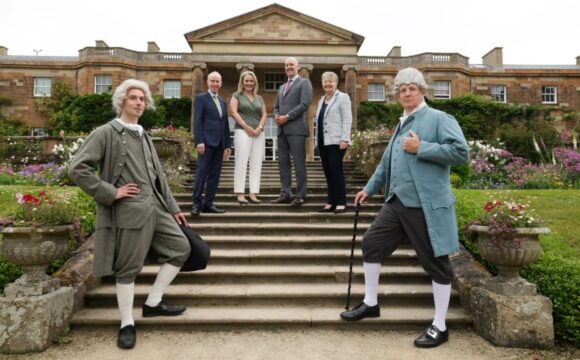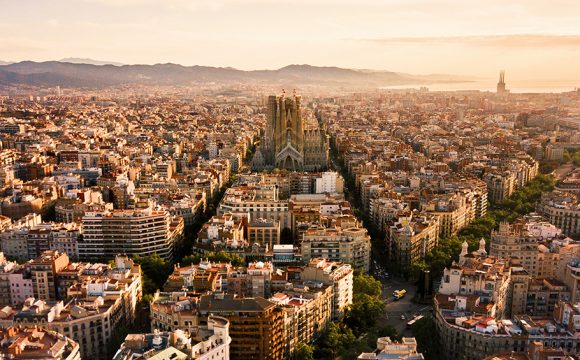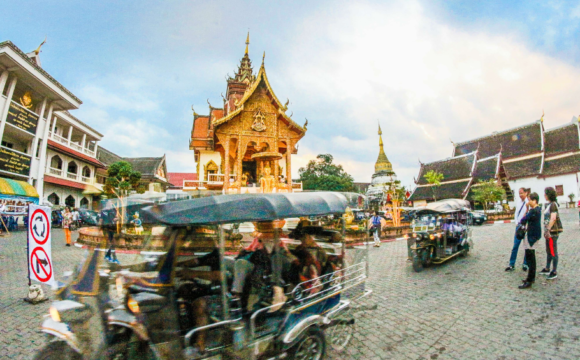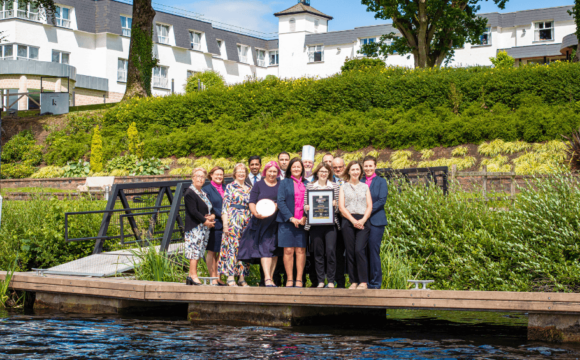Palazzo Madama – Museo Civico d’Arte Antica, Turin, presents, from 10 May to 28 August 2023, the exhibition Byzantines. Places, Symbols and Communities of an Over Thousand-Year-Old Empire, curated by Federico Marazzi with contributions from MANN – Museo Archeologico Nazionale, Naples, Palazzo Madama and the Greek Ministry of Culture and Sport and the collaboration, for the overall organisation of the exhibition, of Villaggio Globale International.
The exhibition, which was on view from 21 December 2022 to 10 April 2023 at MANN – Museo Archeologico Nazionale, Naples, is coming to Turin, its second venue, where the exploration of the ‘long Byzantine millennium’ will be expanded to include a special section on Piedmont.
More than 350 objects – sculptures, mosaics, frescoes, tableware, seals and coins, extraordinary works in ceramic, enamel and silver, valuable gems and goldwork, important architectural fragments – tell the story of the structures, organisational systems, trade activity and rituals of a complex civilisation, at the same time revealing the Eastern Empire’s fine artisanship, cultural intersections, stylistic features and symbols across the centuries. In short, the artistic creativity of the ancient world moving towards the Middle Ages, using a language updated by the Christian faith and influenced by the East, in particular Iranian and Arab culture.
Hundreds of loans from major Italian museums and more than twenty Greek institutions are coming to Turin to tell the story of the millenary effort of an Empire intent on dialogue between the classical and Eastern worlds
A Byzantium, linked to Piedmont, that would see the Principality of Achaea, oriented from the start towards the Greek and Byzantine East, give rise to the Savoy-Achaea Dynasty – formed by the marriage of Philip of Savoy and Isabella de Villehardouin, Princess of Achaea in 1301 – but also a very close link to the dynasty of the Palaeologi, which ascended to the imperial throne in 1261 along with Michael VIII Palaeologus and held onto it until the definitive decline of Byzantium in 1453, this western branch of the empire managing to revive the splendours of the Aleramici court, remaining in power until the death of the last of its line, John George, in 1533.
And Palazzo Madama itself, formerly the castle of the Achaea and home to the Museo Civico d’Arte Antica since 1934, finds Byzantine culture and influence at the root of its collection of applied arts, one of the most important in Europe and ranging from valuable goldwork and ivory to gilt and painted glass, textiles and majolica.
Relationships and contact between Piedmont and the Byzantine Empire were extensive and of varied nature for centuries. The Byzantines occupied a few strongholds in Piedmont along the alpine limes, or fortified frontier, mindful of the reciprocal relationships formed in the eleventh and twelfth centuries, first through the Crusades and then through marital alliances.
William the Elder (William V) of Montferrat took part in the Second Crusade and was hosted at the imperial court in Byzantium. His four sons were all involved with the Crusader States and pursued the dream of rising to an Eastern throne. In 1177, William Longsword married the sister of Baldwin IV (Baldwin the Leper), heir the throne of Jerusalem; in 1180, Renier of Montferrat married Maria, daughter of the emperor of Constantinople, the basileus Michael Comnenus; in 1190, Conrad of Montferrat, having come to the Holy Land, defended the Kingdom of Jerusalem and married Isabella of Anjou, daughter and heir of the king of Jerusalem, but was assassinated; in 1204, William’s fourth son, Boniface, took part in the Fourth Crusade. He managed to take the kingdom of Thessalonica, but died in combat soon after. These bloody ends aside, the Greek East was by this point firmly inserted within the interests of the rulers of Montferrat.
The kingdom of Thessalonica, already lost in 1224, was formally kept by the rulers of Montferrat, who continued to hold the title of king of Thessalonica, by this point devoid of meaning. The kingdom was then given as a dowry to Yolande of Montferrat in 1284 on the occasion of her marriage to Andronikos II Palaiologos (who provided 6,000 Genoan lire in exchange). Upon the death of the marchese John I in 1305, their son Theodore became the lord of Montferrat, founding the new dynasty of the Palaeologi. Theodore I Palaeologus, marchese of Montferrat, was the only one from the East, the only Greek, to succeed in the attempt to found a new dynasty in the West.
Alongside these military endeavours and marital alliances, we find the trade activity of merchants from Alessandria, Asti and, in general, Montferrat in the Greek East, from Cyprus to Armenia, but also Caffa and Pera.
The Savoy participated sporadically in activity in the East in the tenth and eleventh centuries. This changed with Philip of Savoy, lord of Pinerolo, thanks to his marriage to Isabella de Villheardouin. Later, in 1326, Joan of Savoy (later known as Anna Palaiologina) married the basileus Andronikos III; in 1366, Amadeus VI of Savoy, the green count, helped defend the Byzantine empire, fighting at Gallipoli, from which he gained influence and prestige, and achieved important diplomatic victories in Europe. Finally, towards the end of the century, we find links to the Lusignan kings of Cyprus: in 1433, Louis, the son of Amadeus VIII, married Anne of Lusignan; in 1459, Louis of Savoy married Charlotte of Lusignan and, in 1485, the duke Charles I managed to get the title of King of Cyprus from Queen Charlotte (to be inherited upon her death).
In the exhibition, designed by the architect Loredana Iacopino, this narrative is told through the extraordinary numismatic collection of the Museo Civico di Arte Antica, which includes the entire series of coins minted by the Eastern emperors, 150 of which were selected for display.
The exhibition closes with a story through images of Byzantine art objects found in Piedmont, including an ivory box in the cathedral of Ivrea, an ivory diptych in the cathedral of San Gaudenzio in Novara, which was reused at the end of the eleventh century for inscribing the names of the Novara bishops, four enamels portraying Christ and varied saints inserted into the cross of Oberto di Cocconato (thirteenth century; a descendent of the Oberto di Cocconato who accompanied Boniface of Montferrat on the Fourth Crusade, also cited by Villehardouin) in the Treasury of the cathedral of Asti, a decorated ceramic basin in the facade of San Giulio d’Orta and the supposed sword of Constantine Palaeologus (symbol of the struggle against the Turks), given by Baron Tecco to Charles Albert. This sword was placed next to the one used by Charles Albert in the Battle of Novara: Italy and Greece united in the fight for independence from the invaders.
The exhibition explores the founding or defining elements of the Eastern Roman Empire and its cultural and territorial development over the centuries in eight thematic sections: The Shield of Byzantium (army, bureaucracy, emperor and court), Everyday Life (everyday objects and jewellery), From Byzantium to Constantinople (trade, artisanship, coins and taxation), God’s Army (monasticism and the culture of writing), The Space of the Sacred (liturgical furnishings and funerary inscriptions), The Humanism of Byzantium, Byzantines in Piedmont, From Palazzo Madama to Byzantium.
According to tradition, Byzantium was founded in 667 BCE by the Greeks, in a strategic position for dominating the Strait of Bosphorus and the Dardanelles. Expanded by Constantine and chosen as his residence, its name was changed to Constantinople and, when the Roman Empire was divided in 395 CE, it became the capital of the Eastern Roman Empire.
The exhibition tells the long story of this empire (which survived for almost 1,000 years after the Western Empire collapsed under pressure from the ‘barbarians’), from its origins to the Ottoman conquest of Constantinople in 1453. The heir of ancient Rome but founded on the Christian faith, the Byzantine Empire, which at its geographic height stretched from Tunisia to the Caucasus, is told through objects that reveal its organisation, from the emperor (the basileus) and the army to the court and the clergy, and its functioning, from mintage and trade to everyday life and religious practice.
The Byzantine army was organised in several different groups: regional armed forces, made up of peasant-soldiers, who were given a plot of land for supporting themselves and their family, in exchange for which they were called upon, when necessary, to defend the empire’s territory; professionals, the tagmata, paid directly by the emperor (starting from the reign of Constantine V, 741–775) and, lastly, starting from the end of the tenth century, foreign mercenaries, recruited outside imperial borders, like the Varangian Guard, of Russian and Swedish origin, but also select units of Turks and Hungarians.
The objects on view, drawn from the home and private life in Byzantine territories and ranging in date from the fourth to the seventh century, were unearthed in archaeological excavations and come for the most part from Greece, but in some cases from Byzantine sites in Naples, Ravenna and Sardinia. Here we find glass and ceramic tableware and bronze oil-lamps: all objects that still reflect the Roman tradition. The group of precious objects is quite large and includes fibulae, belt buckles, amulets, rings (often with inscriptions and monograms), bracelets, necklaces, headbands and earrings. Here, alongside the influence of Roman art we also find that of the Germanic, Slavic and Iranian worlds.
For centuries, Byzantium exported the many products made within its borders throughout the Mediterranean, especially oil, wine, sauces and ointments, transported in amphorae, as well as luxury products like goldwork and textiles. Of exceptional quality, Byzantine artisanship inherited the expertise of the ancient world and benefited from contacts between the Empire with the Arab world, Persia and the Far East. The widespread use of coinage, minted in three types of metal (gold, silver and copper) was another point of continuity with the ancient world.
Numerous monasteries were built within the borders of the Byzantine Empire: they were not just centres of spiritual life but also keepers of vast land holdings, and so possessed considerable economic and political power, one example being the community on Mount Athos. Architecturally, they comprised buildings inhabited by monks and open exclusively to the religious community – used arranged around an inner courtyard – and an area outside, dedicated to production and receiving pilgrims, with a chapel for religious services for the latter. Many of the monasteries were also important cultural centres, dedicated to the transcription, into Greek, of religious texts, ancient Greek literature and scientific and philosophical treatises.
The profound permeation of the Christian faith throughout the structure of the State and all areas of society means that much of what remains to us of Byzantine cultural heritage is in the form of religious buildings and their furnishings. A distinctive feature of Byzantine churches is the contrast between a plain exterior and a sumptuous interior, filled with sculptures, paintings, mosaics and furnishings. Until the seventh and eighth centuries, these objects were marked by largely geometric, simple embellishments, like crosses and Christological monograms, gradually becoming more elaborate, often with the addition of depictions of animals with symbolic meaning. Inside a church, light, whether natural or artificial, was of fundamental importance for creating an atmosphere of mystical meditation. Artificial light was produced with oil lamps and candelabras, usually fuelled with olive oil. The main liturgical objects included containers for the bread and wine used for the celebration of the Eucharist. The churches also had graveyards, which is where the funerary inscriptions on view in the exhibition were found, decorating the tombs.
In the eleventh century, the Turks penetrated Anatolia, attacking the Byzantine government in that region. By the fifteenth century, Turkish and Mongolian pressure had significantly reduced the empire’s territory. It was in part in the interest of defeating the Turks that the basileus John VIII Palaeologus came to Italy in 1438 to participate in the Council called by Pope Eugene IV to unite the Eastern and Western Churches. His arrival was celebrated by men of letters and artists, including Pisanello, who created the first modern medal in his honour, and Benozzo Gozzoli, who included his portrait in the frescoes in the Chapel of the Magi in Palazzo Medici-Ricciardi, Florence. However, help from the West was not enough to stop the advance of the Ottomans. In 1453, Constantinople was conquered by the army led by Mehmed II and its fall sealed the end of the Byzantine Empire.
As noted above, the story of relations between Byzantium and Piedmont is the story of a ‘dream looking East’ and involved some of the most important families of the Italian feudal system: the Aleramici and the Savoy. These families saw the Crusades and marital alliances with members of the Greek aristocracy as opportunities for extending their reach beyond the local context and entering the political milieu of the Eastern Empire. The results of their ambitious plans were, in truth, modest and their economic gains dubious, but their overseas ventures rekindled chivalric ideals and procured the much yearned-for royal titles, which in form, if not in substance, perpetuated the memory of their glorious deeds in the East and ensured their bearers lasting prestige.
The Museo Civico d’Arte Antica, Turin has an exceptional collection of Byzantine coins: 1,290 total, in gold, silver and bronze , and donated to the museum in 1933 by Pietro Antonio Gariazzo. Gariazzo was an engineer from Biella who, after a long period in the Belgian Congo building railways, returned to Piedmont where he devoted himself to studying and collecting ancient coins. He was a friend of Vittorio Viale, director of the Musei Civici since 1933, after the collections were moved to Palazzo Madama, and assisted him as honorary conservator of the Turin numismatic collections. The group selected for the exhibition includes coins minted across ten centuries, from the fifth to the fourteenth century, and bear the portraits of the most important Byzantine emperors, sometimes with their wives and children. These are not just of iconographic interest, but document an important stylistic development: the oldest coins, issued under Arcadius (395–408), still show the influence of classical coins, with the emperor portrayed in profile and in accordance with the canons of Greek art. The coins minted during the reigns of Heraclius and Constans (seventh century) have instead lost all trace of interest in likeness and the portraits of the emperors are extremely abstract. Lastly, the gold and bronze coins from between the twelfth and fourteenth centuries no longer present the emperor’s portrait, but his whole figure, which can only be identified by the insignia of imperial power (the labarum, or banner, and the globus cruciger, an orb topped by a cross). It also became increasingly frequent to include an image of Christ, the Virgin Mary or saints on the back of the coin, replacing the winged Victories and female allegorical figures of the city of Constantinople that had decorated the reverse of coins since Late Antiquity.
An extraordinary depiction of the empire ‘that wouldn’t die’.
















